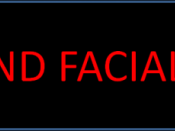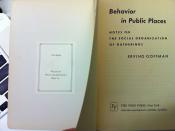Use of Paralanguage and Kinesics
The use of kinesics and paralanguage in everyday life is the most
prominent use of persuasion we use subconsciously. They are used
subconsciously because you may not know what they mean. Which can
cause cultural tension if you do something that may seem harmless to you
but may be a great insult to another culture. Paralanguage has many forms
such as whistling which can be used by many people as a means of
entertaining by whistling a song or even in American culture used to hound
women on the streets because they appear to be attractive. These two uses of
persuasion I will discuss about in my paper. I will discuss the history of
both and also how they are used today in everyday life.
To start of with I will define kinesics. Kinesics is articulation of the
body, or movement resulting from muscular and skeletal shift.
This includes
all actions, physical or physiological, automatic reflexes, posture, facial
expressions, gestures, and other body movements. Body language, body
idiom, gesture language, organ language and kinesic acts are just some terms
used to depict kinesics. In ways that body language works in nonverbal acts,
body language parallels paralanguage. Kinesic acts may substitute for
language, accompany it, or modify it. Kinesic acts may be lexical or
informative and directive in nature, or they may be emotive or empathic
movements. Posture is one of the components of kinesics. Posture is broken
down into three basic positions: bent knees, lying down, and standing.
Artists and mimes have always been aware of the range of communication
possible through body stance. But there are some cultural differences in
posture positions. Most people use the bent knee position to eat, but while
the Romans used to eat lying down. Prince Peter of...



Tigereye
This is quite a nice summary of non verbal behaviour but the addition of some empirical evidence in this area of research would inform the reader of particular studies that have tested these assumptions (eg. Ekman, Mehrabian)
2 out of 2 people found this comment useful.